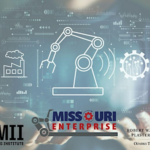During the past few years, the majority of manufacturers have migrated their systems to the cloud to increase business agility, access unlimited data and reduce costs. In fact, the manufacturing industry leads all other sectors in cloud adoption. As a result, cloud-based manufacturing systems are becoming the gold standard for building the future smart factory as more manufacturing leaders migrate their operations.
However, modern manufacturers receive massive amounts of data from various sources, including IIoT devices, machines, vendors, customers and supply chains. This vast amount of data stored in the cloud can be overwhelming and challenging to make sense of. As a result, manufacturing firms cannot easily access helpful information from their data to deliver actionable insights.
In most organizations, this data is still “raw”—relatively unprocessed information in various forms. Some are collected in real-time, while others are delivered in batches later. Almost none of the collected data is clearly correlated, making it impossible to analyze or identify trends relevant to their operations.
The leading challenge manufacturers face with raw data is understanding how to contextualize it. However, this raw data can be incredibly valuable to businesses if they can mine the critical parts of it. Manufacturers need real-time, cost-effective, actionable insights derived from their data. As a result, there has been a tremendous resurgence in demand for a cloud-based semantic layer to ensure material traceability while improving speed, scale and cost savings in a manufacturing firm.






